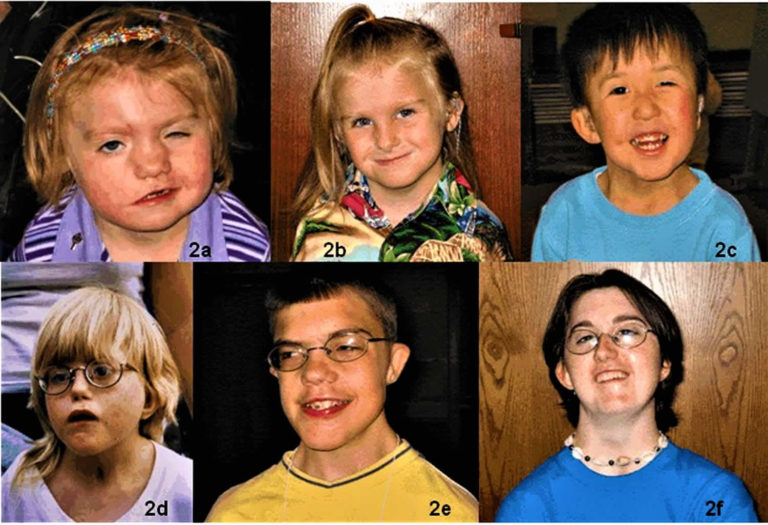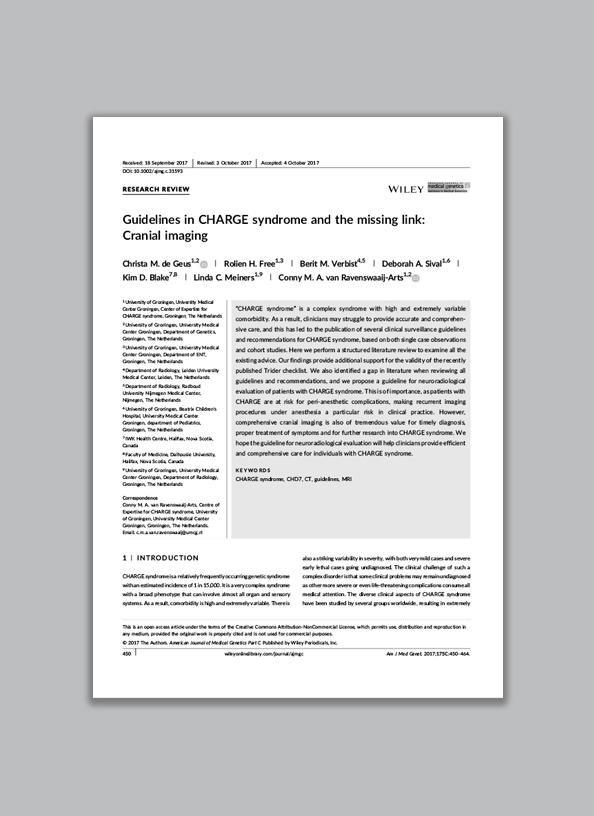

Several patients with various chromosome defects have been diagnosed with CHARGE syndrome, again pointing to genetic factors as a cause. Increased paternal age has been known to be associated with the increased occurrence of new dominant mutations in offspring. The mean paternal age in one study was 34 years as opposed to 30 years in a control group. Other interesting observations include slightly increased paternal age in sporadic cases. Since monozygotic twins are roughly 100% genetically identical, this supports the idea that there is a strong genetic factor involved in CHARGE syndrome. One such study compared a pair of monozygotic twins, meaning identical twins resulting from a single zygote (fertilized egg that leads to the birth of two individuals), who were both affected with CHARGE syndrome and a pair of dizygotic twins, meaning twins that result from fertilization of two different eggs, of whom only one had the syndrome. Twin studies are often used to determine if the occurrence of a condition has a strong genetic component. Therefore, the recurrence risk for healthy parents of an affected child would be low, but not negligible. In addition, there have been a few cases of siblings affected, suggesting the possible presence of a mixture of cell types (germ line mosaicism) in a parent for a dominant mutation. These families may demonstrate variable expressivity of a dominant gene. There have also been cases in which a parent with one or two features of CHARGE had a child with enough features to fit the diagnosis. However, reports of parent-to-child transmission of the condition indicate an autosomal dominant type of inheritance. Most cases of CHARGE syndrome are sporadic, meaning that they occur in a random or isolated way. About half die during the first year of life from respiratory insufficiency, central nervous system (CNS) malformations, and bilateral choanal atresia. Infants with CHARGE syndrome generally have difficulty with feeding and most of those affected have mental retardation.

Crucial development of the choanoa, heart, ear, and other organs occurs 35-45 days after conception and any disruption in development during this time is believed to lead to many of the features of the syndrome. There have been a few familial cases but most cases are sporadic. It is believed that perhaps a new dominant change in a gene is the cause for many cases. However, the cause for the condition remains unclear. Due to the large number of patients described since 1979, many physicians now regard CHARGE association as a recognizable syndrome. It was in 1981 that the CHARGE acronym was proposed to describe the features of the condition. Soon after, several other papers were published describing similar patients who all had both choanal atresia and coloboma, that is a cleft or failure to close off the eyeball.

DescriptionĬHARGE syndrome was first described in 1979 as an association of multiple congenital anomalies, all of which included choanal atresia, meaning the blocking of the choanae, the passages from the back of the nose to the throat which allow breathing through the nose. While these features have classically been used for identification of affected individuals, many other malformations and medical problems have been observed to occur with this syndrome.

The name of the syndrome is an acronym for some of its features, and each letter stands for the following conditions: CHARGE syndrome, also known as CHARGE association, is a group of major and minor malformations that have been observed to occur together more frequently than expected by chance.


 0 kommentar(er)
0 kommentar(er)
